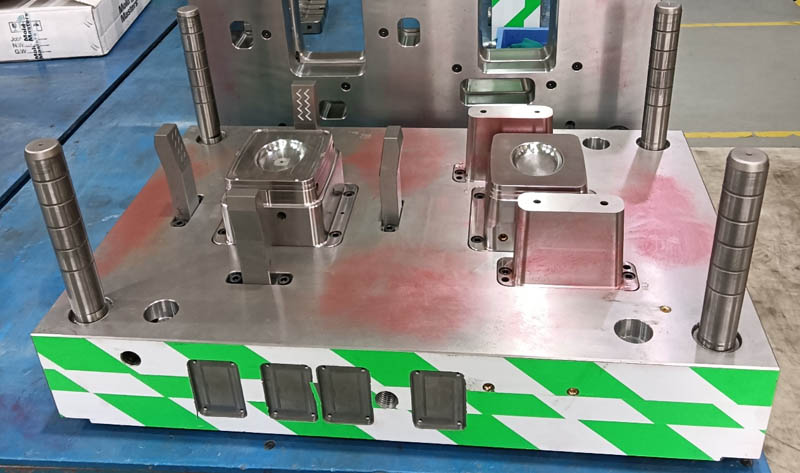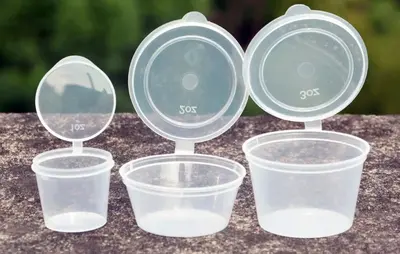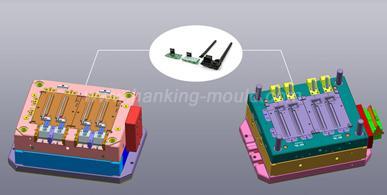


Improving the polishing of the mold surface, increasing surface aesthetics of the injection molding plastic parts, can also make the mold better performance:
A. Make injection plastic products easy to be demoulded.
B. Effectively prevent corrosion/wear on the surface of the plastic mold.
C. Reduce injection molding production cycles.
D. Reduce the risk of fracture and cracking due to sudden high temperatures or fatigue.
A. When judging the surface quality of the mold, attention should be paid to:
a. The surface of the mold must have an accurate geometric shape and be free from undulating waves. This phenomenon is caused by defects left by grinding wheel/milling cutter or oilstone.
b. The surface of the mirror treated mold must be free of defects such as small holes, orange peel, polished lines, pits, and pinholes.
B. For injection molding polishing, attention should be paid to
a. When polishing, it is first necessary to understand the shape and cavity of the workpiece, and distinguish between areas that need to be polished and areas that cannot be polished, such as insertion and collision positions, based on the mold polishing data.
b. Pay attention to the appearance of the workpiece during precision mold processing: clamping lines, complex edges and corners of the mold.
c. Size note: The polished grain surface processed by EDM should maintain a single edge of ± 0.015mm and a height of ± 0.02mm. For grinding surfaces with a roughness of Ra0.8um, the single edge should maintain a height of ± 0.008mm and ± 0.013mm.
A. The process of mold polishing depends on the surface roughness of the workpiece, such as: 320 # sand grade can be used for grinding the Electrical discharge machining back surface (18 #), and the general finishing sequence is 320 #~~600 #~~800 #~~1200~1500 # or 240 #~400 #~~800~~1200 #~~1500 #. 1500 # sand number is only applicable to hardened steel with a surface roughness of 52HR or above. If the surface roughness is rougher, the grinding material in the processing sequence should be one level forward, such as 220 # sand number or oilstone, and then processed in sequence.
B. The order of high precision polishing is to use diamond paste for precision polishing after completing the sand number processing, and the sequence is: 9 μ M, 6 μ m. 3 μ, just remove the sand mark pattern.
A. The polishing of the injection mold should be processed along the direction of the mold; The movement force should be balanced and uniform;
B. When conducting another finer sand grading, the injection mold polishing should also be adjusted accordingly.
C. The grinding direction should be at a 90 ° or 45 ° angle to the previous grinding direction until the previous level marks are omitted before proceeding to the next process. Avoid coarse lines that are prone to deformation and residue during long-term grinding in the same direction from being carried over to the next process, affecting the subsequent processing program.
D. To prevent excessive polishing and uneven undercut, the operator must hold the tool in a flat position, maintain force, and move evenly. This is to avoid problems such as injection molding plastic product shrinkage and drag mold during mass injection molding production.
E. When encountering phenomena such as low deformation (unevenness)/unclear edges in the processing of precision molds, it is necessary to grind evenly along the shape of the mold core with even force.
A. When grinding, it is necessary to process in the direction of the clamp mouth, leaving a fine and slight EDM texture on the edges and corners, to maintain a degree that is difficult to see with the naked eye. This not only does not affect the appearance smoothness but also ensures a sharp clamp mouth; However, it all depends on the skills and experience of the polisher.
B. Install the mold core and slider into the mold base and lock them in place before polish the injection mold.
A. Every step of polishing must be kept clean, and the environment allows for optimal cleaning in a dust-free room. The order of high Bull polishing is: 6 μ M~~3 μ M~~1 μ M~~0.5 μ M.
B. When entering high glass polishing after the sandpaper processing program is completed, the polishing workpiece and the operator's hands must be cleaned; Avoid bringing sand and dust onto the surface of the next workpiece to affect the quality of polishing.
C. Start polishing by dealing with edges, narrow, difficult, and complex areas.
D. Control the polishing pressure based on the hardness of the mold and the grade of the diamond paste: usually, rotary polishing is used, with small circles moving for balance, uniform grinding, and then slowly extending to the large circle. To avoid excessive polishing pressure and time, such as pitting (pinholes) and orange peel, the shorter the time control, the better.
E. Remove wool head lines left during injection mold polishing:
a. Manually grind various soft materials such as pure wool/soft nylon cloth onto the surface of the workpiece, corresponding to the final process of diamond paste, until the wool wheel pattern is removed. Then, use a cleaning agent to clean the remaining stains after grinding.
b. As above, manually apply chemical polishing powder to the surface of the workpiece, add a small amount of polishing agent, and then use soft felt/velvet for grinding to directly achieve high-precision mirror effect.
F. Determine the appropriate sand grade diamond paste according to the Hardness of the workpiece, and use a hard polishing tool. Select a polishing tool with medium hardness and first use coarse sand diamond paste. Then use finer and finer diamond paste in sequence.
Cloth Hardness | Cloth/Material
| Sand size(μm) |
Very hard hard hard hard hard soft soft very soft | Steel Reinforced nylon Coated nylon Neutral felt Blended wool head polishing head/handle Pure wool top dense woven blended velvet velvet Oxidizing polishing agent | Diamond Paste 45 . 15 . 6 .3
Diamond Paste 9 .6 .3 10.7.3 Aluminum oxide Diamond Paste 6 . 3 .1 Diamond Paste 3 . 1 . 0.5 Diamond Paste 1号以下 Chemical polishing powder/magnesium oxide(Mgo) Op_s |
Level sorting | Diamond Paste Polishing Size and Polishing Tools | Roughness Raμm |
Level 4 | 45μm/ 25μm hard/soft wood/coated nylon | 0.063 |
Level 3 | 15μm/10μm Blended wool/neutral felt | 0.032 |
Level 2 | 7μm3μm1.5μm Pure wool head/dense woven blended velvet | 0.016 |
Level 1 | 3μm1μm0.5μm High purity cotton/velvet | 0.005—0.008 |
A. Choose suitable materials for polishing based on the shape of the copper electrode and the thickness of the gong blade pattern. If the grain of the gong knife is too thick, 320 # or 400 # sandpaper can be used for polishing; If it is fine, it can be polished directly with 600 # sandpaper.
B. Do not use too much force to polish the copper electrode, as the material of the copper electrode is relatively soft. Special attention should be paid to the shape of the copper electrode (note: the shape of the copper electrode cannot be changed casually). Excessive force can affect the line and size of the copper electrode.
C. The requirement for rough polishing is: after polishing off the tools pattern, it can be directly polished to 320 # sandpaper. The requirement for precision polishing is to use 400 # oilstone to smooth out all uneven areas, then use 400 # sandpaper to polish the 400 # oilstone and gong knife patterns clean, use 800 # sandpaper to polish the 400 # sandpaper patterns clean, use 1200 # sandpaper to add a little kerosene to polish the 800 # sandpaper patterns off, and finally polish to remove the patterns.
D. The main copper electrode should be wiped with gasoline once to prevent yellowing. The method of polishing small copper electrodes is the same as that of polishing large copper electrodes. Small copper electrodes are also divided into two types: coarse electrodes and fine electrodes. Generally, coarse electrodes can be polished with 320 # sandpaper, while fine electrodes can be polished with 600 # sandpaper.
E. The shape of the copper electrode is very small and thin, and it cannot be polished with coarse sandpaper. Instead, it should be directly rubbed off with 800 # sandpaper to remove the flash.
F. If there are small holes in the copper electrode, it should be directly ground with a fiber oil stone, or use a sanding machine to slow down the speed of the sandpaper and rub off the edges of the batch.
G. The polished copper electrode needs to be self checked again to confirm that it is OK and proceed to the next process.






 Call us on:
Call us on:  Email Us:
Email Us:  1st Floor, Block1, No.3 Beiting Road, Houting Community, ShaJing Street, Bao'An District, Shenzhen City, Guangdong Province, China
1st Floor, Block1, No.3 Beiting Road, Houting Community, ShaJing Street, Bao'An District, Shenzhen City, Guangdong Province, China